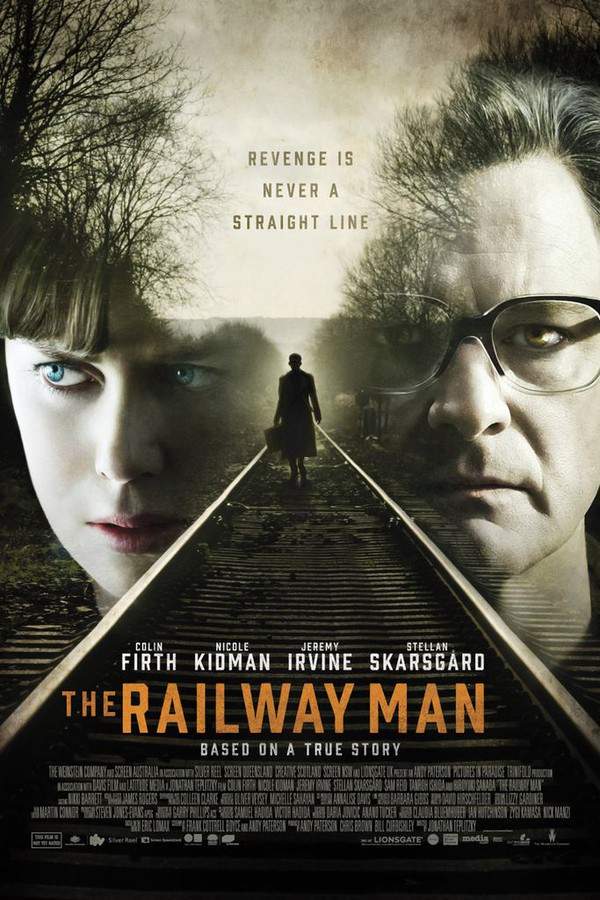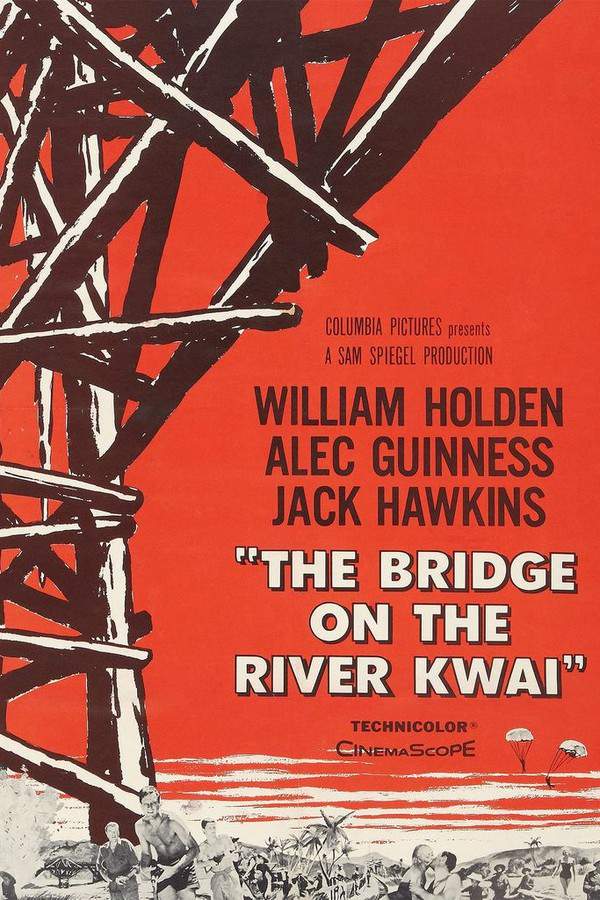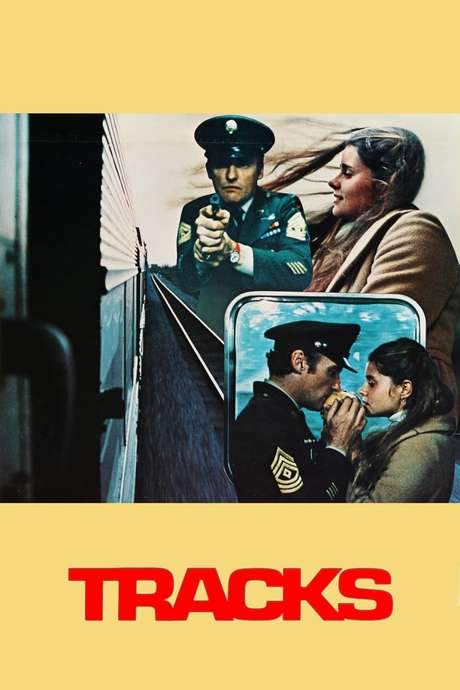The Railway Man 2014

A former British prisoner of war, Eric Lomax, struggles to overcome the trauma of his wartime experiences. Seeking closure, he confronts the Japanese officer and interpreter who inflicted terrible suffering during his captivity. Accompanied by his wife, he travels to Japan on a journey of reconciliation and healing, forcing him to face the painful memories he has long suppressed.
Does The Railway Man have end credit scenes?
No!
The Railway Man does not have end credit scenes. You can leave when the credits roll.
Meet the Full Cast and Actors of The Railway Man
Explore the complete cast of The Railway Man, including both lead and supporting actors. Learn who plays each character, discover their past roles and achievements, and find out what makes this ensemble cast stand out in the world of film and television.
External Links and Streaming Options
Discover where to watch The Railway Man online, including streaming platforms, rental options, and official sources. Compare reviews, ratings, and in-depth movie information across sites like IMDb, TMDb, Wikipedia or Rotten Tomatoes.
Ratings and Reviews for The Railway Man
See how The Railway Man is rated across major platforms like IMDb, Metacritic, and TMDb. Compare audience scores and critic reviews to understand where The Railway Man stands among top-rated movies in its genre.

59
Metascore
7.1
User Score


67%
TOMATOMETER

68%
User Score

7.1 /10
IMDb Rating

69
%
User Score
Take the Ultimate The Railway Man Movie Quiz
Challenge your knowledge of The Railway Man with this fun and interactive movie quiz. Test yourself on key plot points, iconic characters, hidden details, and memorable moments to see how well you really know the film.
The Railway Man Quiz: Test your knowledge on the emotional journey of Eric Lomax in 'The Railway Man'.
What drove Eric Lomax to Thailand three decades after the war?
Closure and redemption
To seek revenge
A family vacation
To find a lost artifact
Show hint
Awards & Nominations for The Railway Man
Discover all the awards and nominations received by The Railway Man, from Oscars to film festival honors. Learn how The Railway Man and its cast and crew have been recognized by critics and the industry alike.
4th AACTA Awards 2015
Best Film
Best Adapted Screenplay
Best Cinematography
Best Original Music Score
Best Sound
Best Costume Design
Full Plot Summary and Ending Explained for The Railway Man
Read the complete plot summary of The Railway Man, including all major events, twists, and the full ending explained in detail. Explore key characters, themes, hidden meanings, and everything you need to understand the story from beginning to end.
As World War II unfolded, British officer Eric Lomax became a victim of the Japanese invasion in Singapore, leading to his capture and subsequent transfer to a brutal POW camp. Here, he was coerced into forced labor on the infamous Thai-Burma Railway, an endeavor that tested the limits of his physical and emotional stamina. As the war raged on, Lomax’s resourcefulness raised suspicions among his captors, culminating in severe torture—ranging from beatings and starvation to waterboarding. The reason behind this brutal treatment was their belief that he was attempting to gather intelligence for espionage. However, unbeknownst to them, his true motive was to create a simple device to uplift the spirits of himself and his fellow prisoners.
Fast forward thirty years, and the haunting memories from Lomax’s harrowing experiences remain etched in his psyche. Despite the unwavering love and support from his wife, Patricia, who shared his fervor for trains, the emotional scars lingered. Lomax’s confidant, Finlay, himself a former POW, stumbled upon the shocking news that one of their torturers, Takashi Nagase, had now become a tour guide at the very camp where he had once served. Tragically, before Lomax could act on this unsettling revelation, Finlay’s own demons took hold, leading him to a heartbreaking end by hanging from a bridge.
Devastated by Finlay’s passing, Lomax felt compelled to undertake a journey to Thailand, seeking closure amid his swirling emotions of grief and anger. He returned to the scene of his trauma, intent on confronting Nagase, hoping to free himself from a lifetime shackled by resentment. In a gripping standoff with his former captor, Lomax found himself mirroring the brutal interrogation techniques once unleashed upon him, highlighting the relentless cycle of suffering that can ensue.
In a climactic moment fraught with tension, Lomax prepared to exact his revenge using a gruesome torture device. Yet, in an unexpected turn, he found Nagase submissively awaiting his fate, prompting a moment of introspection for Lomax just as he was about to strike. Instead, he chose to encapsulate Nagase in a bamboo cage, symbolizing the horrific treatment both he and other POWs had endured.
As Nagase languished within the cage, a startling truth unfolded: he too had been misled into believing in Japan’s destined glory in the war, ignorant of the horrific toll it wrought upon humanity. This moment of revelation softened Lomax’s fury, allowing empathy to break through as he grasped the complexity of Nagase’s situation. Eventually, he made the poignant decision to free Nagase, casting aside his weapon and returning home.
Months later, Lomax revisited Thailand with Patricia by his side and was met with a powerful reunion with Nagase. In a transformative encounter filled with emotion, the former enemies offered heartfelt apologies and embraced, demonstrating remarkable growth and understanding. The narrative concludes with a powerful testament to the enduring strength of forgiveness and friendship, revealing that until Nagase’s death in 2011, the bond between him and Lomax remained steadfast, with Lomax following suit just a year later.
Uncover the Details: Timeline, Characters, Themes, and Beyond!

Coming soon on iOS and Android
The Plot Explained Mobile App
From blockbusters to hidden gems — dive into movie stories anytime, anywhere. Save your favorites, discover plots faster, and never miss a twist again.
Sign up to be the first to know when we launch. Your email stays private — always.
Watch Trailers, Clips & Behind-the-Scenes for The Railway Man
Watch official trailers, exclusive clips, cast interviews, and behind-the-scenes footage from The Railway Man. Dive deeper into the making of the film, its standout moments, and key production insights.
The Railway Man Themes and Keywords
Discover the central themes, ideas, and keywords that define the movie’s story, tone, and message. Analyze the film’s deeper meanings, genre influences, and recurring concepts.
The Railway Man Other Names and Titles
Explore the various alternative titles, translations, and other names used for The Railway Man across different regions and languages. Understand how the film is marketed and recognized worldwide.
Similar Movies To The Railway Man You Should Know About
Browse a curated list of movies similar in genre, tone, characters, or story structure. Discover new titles like the one you're watching, perfect for fans of related plots, vibes, or cinematic styles.
Quick Links: Summary, Cast, Ratings, More

What's After the Movie?
Not sure whether to stay after the credits? Find out!
Explore Our Movie Platform
New Movie Releases (2025)
Famous Movie Actors
Top Film Production Studios
Movie Plot Summaries & Endings
Major Movie Awards & Winners
Best Concert Films & Music Documentaries
Movie Collections and Curated Lists
© 2025 What's After the Movie. All rights reserved.





































